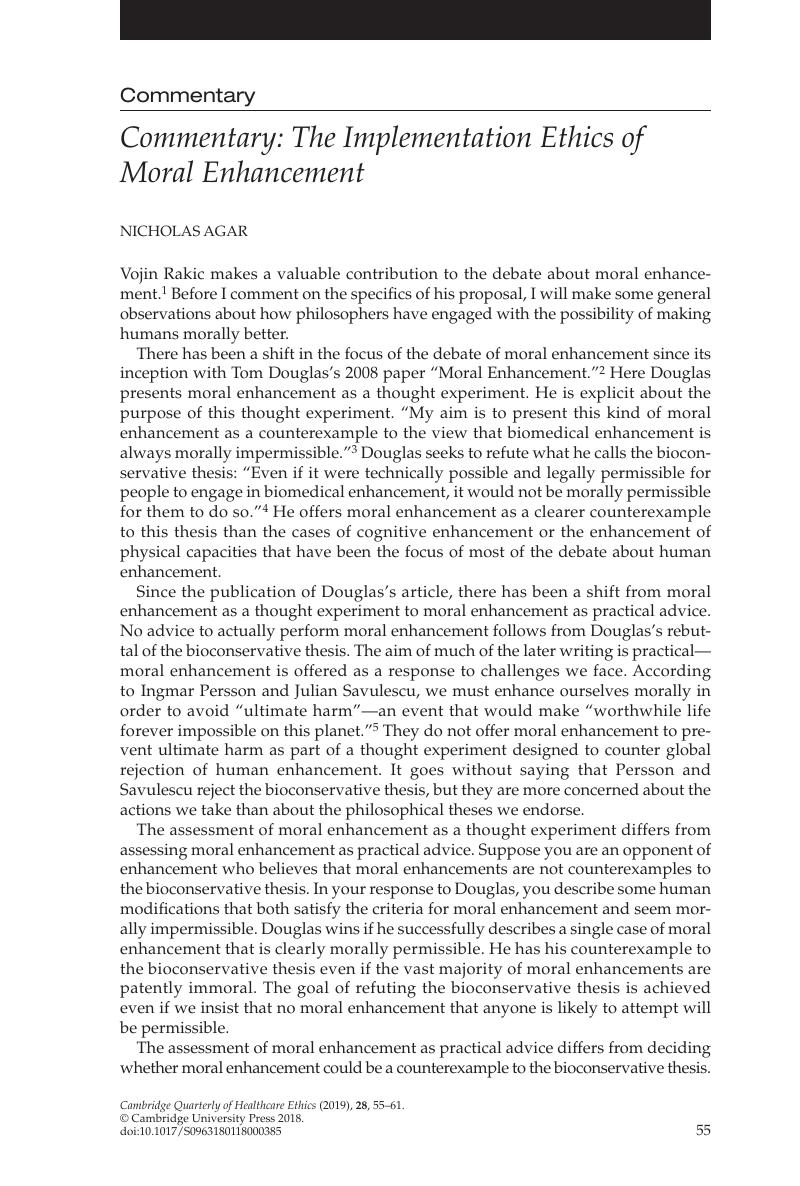No CrossRef data available.
Article contents
Commentary: The Implementation Ethics of Moral Enhancement
Published online by Cambridge University Press: 20 December 2018
Abstract

- Type
- Special Section: Genome Editing: Biomedical and Ethical Perspectives
- Information
- Copyright
- Copyright © Cambridge University Press 2018
References
Notes
1. Rakic V. Genome editing for involuntary moral enhancement. In this issue of Cambridge Quarterly of Healthcare Ethics.
2. Douglas, T. Moral enhancement. Journal of Applied Philosophy 2008;25:228–45.CrossRefGoogle ScholarPubMed
3. See note 2, Douglas 2008, at 228.
4. See note 2, Douglas 2008, at 228.
5. Persson, I, Savulescu, J. Unfit for the Future: The Need for Moral Enhancement. Oxford: Oxford University Press; 2012, at 46.CrossRefGoogle Scholar
6. Persson, I, Savulescu, J. Moral enhancement, freedom and the God Machine. The Monist 2012;95(3):399–21.Google Scholar
7. Harris, J. Moral enhancement and freedom. Bioethics 2011;25:102–11.CrossRefGoogle ScholarPubMed
8. Agar, N. Moral bioenhancement is dangerous. Journal of Medical Ethics 2015;41:343–5.CrossRefGoogle ScholarPubMed
9. See note 5, Persson 2012.
10. Agar, N. Moral bioenhancement and the utilitarian catastrophe. Cambridge Quarterly of Healthcare Ethics 2015;24:37–47.CrossRefGoogle ScholarPubMed
11. See Corruption Perceptions Index 2017; available at https://www.transparency.org/news/feature/corruption_perceptions_index_2017 (last accessed 27 Sept 2018).
12. See Agar, N. Liberal Eugenics: In Defence of Human Enhancement. Oxford: Blackwell; 2004CrossRefGoogle Scholar for my interpretation of the scope and significance of procreative freedom in respect of choices about our children’s genetic makeups.


